Have you ever stopped to think about the journey your dollar bills have been on before they ended up in your wallet? These pieces of currency pass through countless hands and transactions. We believe it is fair to know more about something we can’t live without.
If you want to know the average lifespan of a single dollar bill or the meanings behind its intricate designs and symbols, we recommend you read on and appreciate how much each dollar bill went through before it came to you.
Still The Same Since 1963

The dollar bill is the only denomination in circulation that has not undergone significant design updates due to the fact that counterfeiting efforts are primarily focused on larger denominations, such as the $50 or $100 bill.
The U.S. Mint and Treasury Department have determined that the cost of updating the design of the dollar bill would not be justified, given the relatively low threat of counterfeiting. While other denominations have received fancy new designs to improve security and deter counterfeiting, the dollar bill remains largely unchanged.
The Dollar Is Not Made of Paper

Contrary to popular belief, U.S. currency is not made of paper but rather a unique blend of 75% cotton and 25% linen. Before being transformed into dollar bills, the raw materials arrive at the Treasury’s Bureau of Engraving and Printing in large, heavily-tracked sheets.
Once there, the sheets go through a complex process that includes printing, cutting, and bundling the finished bills. But what about the ink used to print these bills?
The Ink Is Classified Information

The exact recipe for the ink used on U.S. dollar bills is a closely guarded secret, known only to a select few at the Treasury Bureau. This is done for security reasons, as the specialized ink is formulated to be resistant to fading and tampering, making it difficult for counterfeits to mimic the genuine article.
The unique blend of chemicals used in the money’s ink is strictly guarded in order to prevent counterfeiting and protect the integrity of the U.S. currency. Any attempt to recreate the ink would be downright impossible.
An Almost Limitless Amount
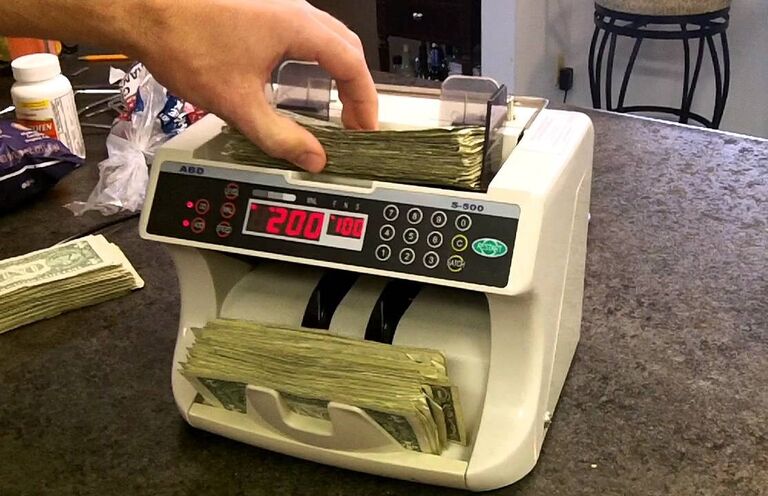
As of 2020, the total value of all U.S. dollar bills in circulation was approximately 13.1 billion dollars, and that’s just in the form of single dollar bills. That’s a lot of cash!
To put it into perspective, if you had access to the world’s largest money-counting machine and ran all of these bills through it, you would be left with a massive stack of singles. This amount of money could buy every single item in the dollar store for the rest of your life.
Illuminati Symbol?
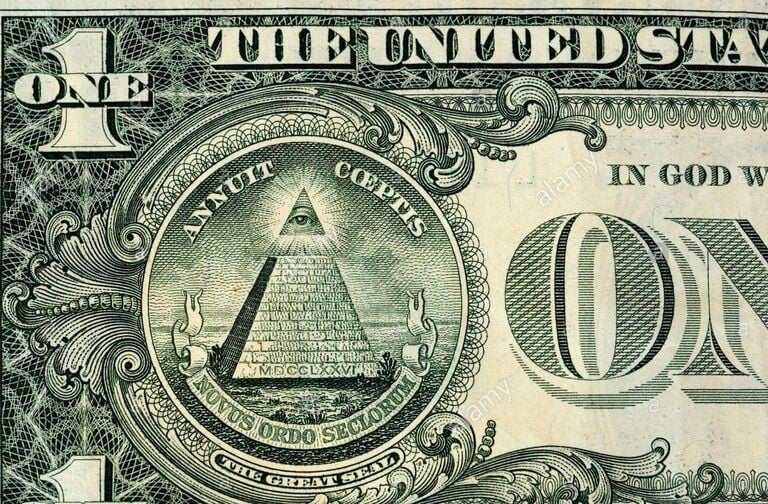
If you’ve ever noticed the pyramid with the floating eye on the back of the one-dollar bill and wondered if it’s associated with the Illuminati or other conspiracy theories–you are wrong. Instead, the symbol, known as the “Eye of Providence,” represents the original 13 colonies that formed the United States.
The floating top symbolizes the future of the nation that is yet to be brought to light. The “Eye of Providence” essentially represents a divine presence that watches over and guides the nation, so stop with the conspiracy theories already!
How Long Does A Dollar Last?

We intend this question to mean literally and not as a reference to your budgeting skills. The truth is that dollar bills don’t circulate for very long before being retired. According to the Federal Reserve, the average lifespan of a single dollar bill is about 6.6 years.
We don’t know about you, but six years is way too long for a dollar to last in our possession. However, if you’re curious about the specific journey of a particular bill, there is a way to track it. Thanks to technology, you can now stalk the dollar you are about to use.
George Tracker
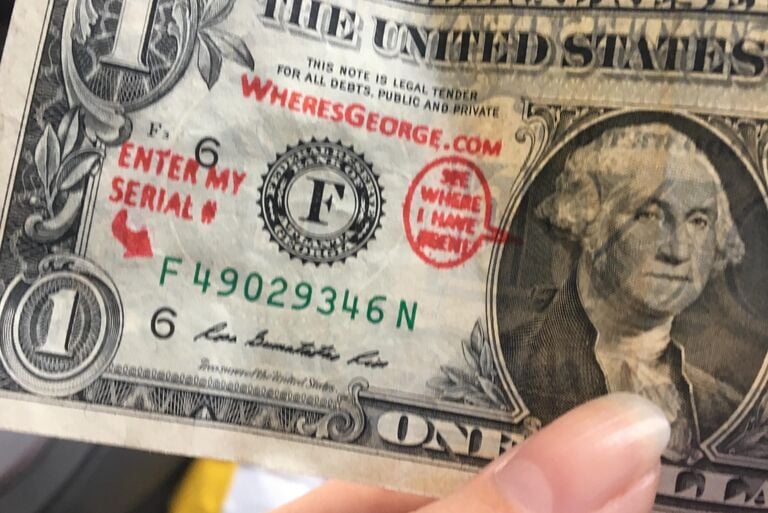
If you’re curious about the journey that your dollar bills have been on before they ended up in your wallet, there is a way to trace their path. The Federal Reserve’s Where’s George website allows users to enter the serial number of a dollar bill and see its recorded history.
By searching the serial number, the site generates a list of the zip codes where the bill has previously been tracked. While not every transaction is recorded, this can give you an idea of where the bill has spent much of its time. We believe it pays to know where your dollar has been.
Tearing Dollars Up Is Hard To Do
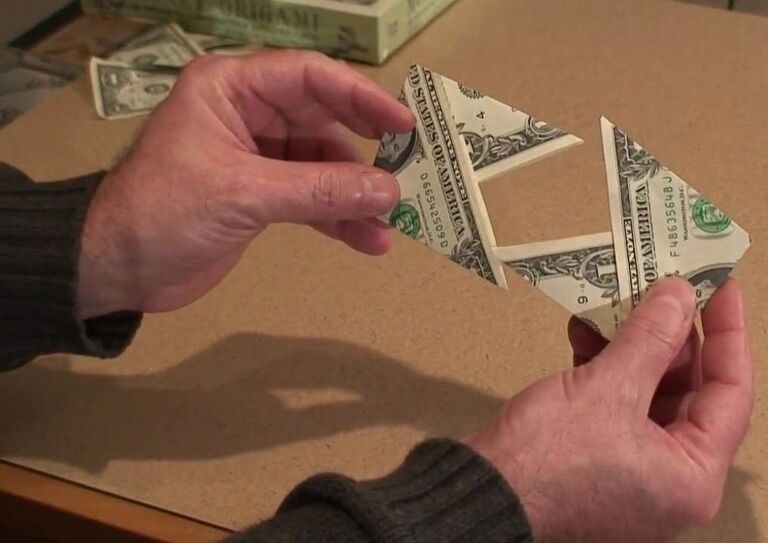
According to the Federal Reserve, dollar bills are specially designed to withstand the force and friction of 4,000 folds. It would actually take tons of wallet-wiggling and literal dollar-bending before a buck breaks.
However, if, for some reason you do manage to rip a dollar apart, don’t fret. Hope is not lost, as there is a way to get around this unfortunate event. But it would require that you go where unbroken bills have never gone before.
Where Do Broken Bucks Go?
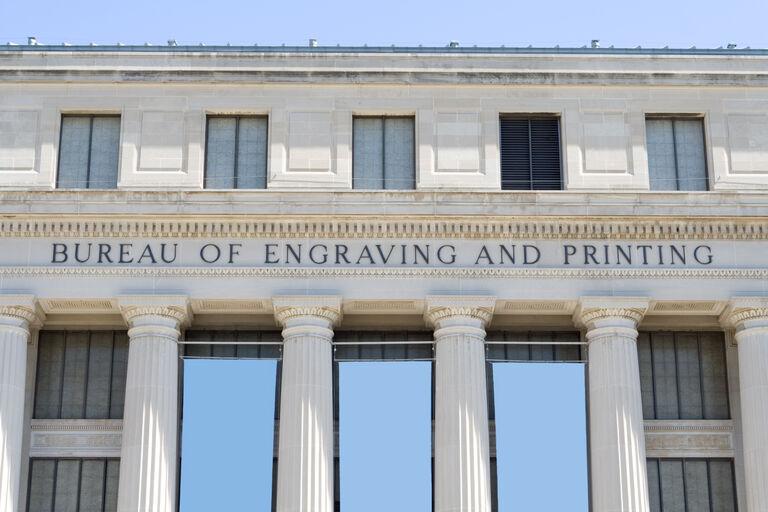
Do broken dollar bills find their way home? Actually, they do. If a dollar bill is torn beyond the point of being three-quarters of the way intact, it should be sent to the Mutilated Currency Division of the Bureau of Engraving and Printing for evaluation.
This division is responsible for determining whether a bill can be replaced or not. If a bill is deemed eligible for replacement, it will be exchanged for a new one. The process is easy-peasy. But just because ripped bills can be replaced, we recommend you don’t tear them just for the sake of it.
Identify Replaced Bills
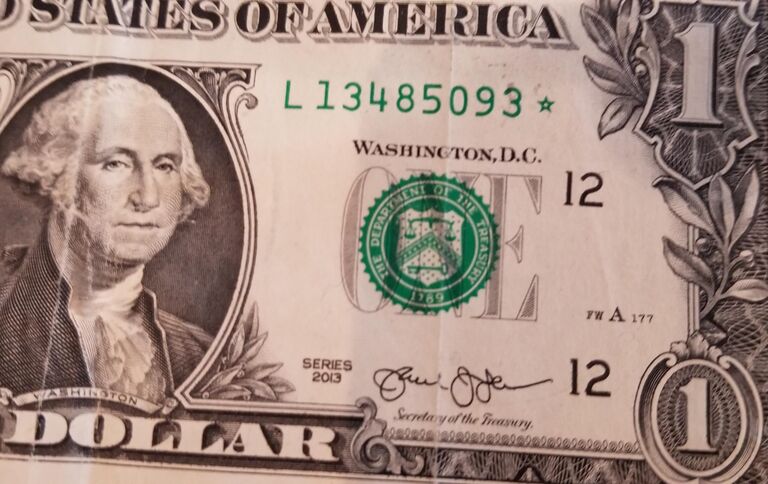
The Bureau of Engraving and Printing (BEP) is responsible for printing and issuing U.S. currency, and there are several reasons why they may need to replace bills. In addition to the Mutilated Currency Division, which handles severely damaged bills, the BEP may also replace bills that have misprints or other errors.
These mistakes are rare, but if a misprinted bill is detected, it will be replaced with a new one. When replacement bills are issued by the BEP, they are easily identifiable by a star at the end of the serial number.
The Advent Of The Buck-Coin?
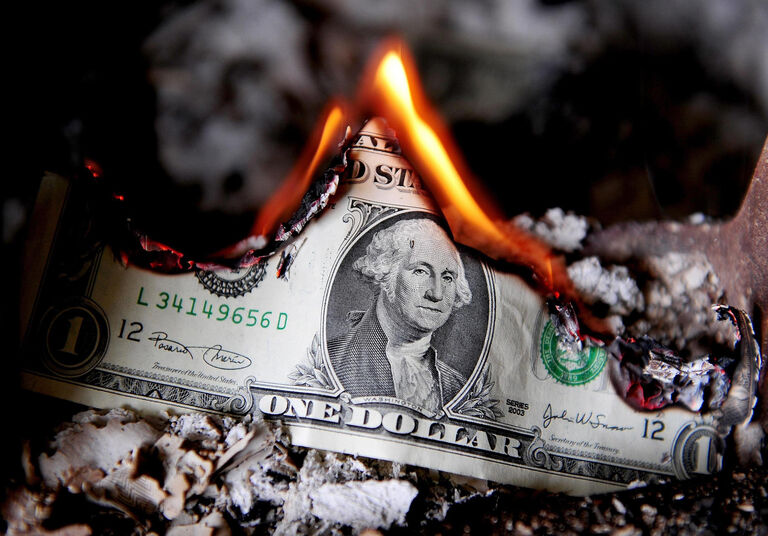
While dollar bills are a convenient and widely accepted form of currency, some policymakers have argued that it might be time to consider replacing them with something else, such as a $1 coin.
The idea of transitioning to a $1 coin has been proposed multiple times in the past, with the main argument being that coins are more durable and cost-effective in the long run compared to paper bills.
Trusting God Since 1956
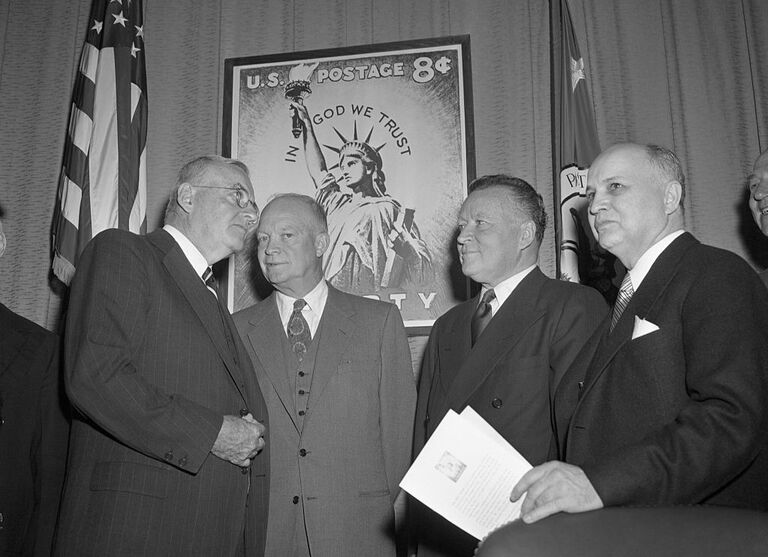
The phrase “In God We Trust” has been featured on U.S. coin currency since the Civil War, but it was not until President Dwight D. Eisenhower signed a law in 1956 that the motto was added to paper money.
Prior to this time, U.S. paper bills did not include the phrase. If you happen to come across an older paper bill that predates the 1956 law, it will not have the “In God We Trust” motto printed on it. But trust that it will be such a rare find that it could be worth a ton if you have one in your possession.
Lucky 13?
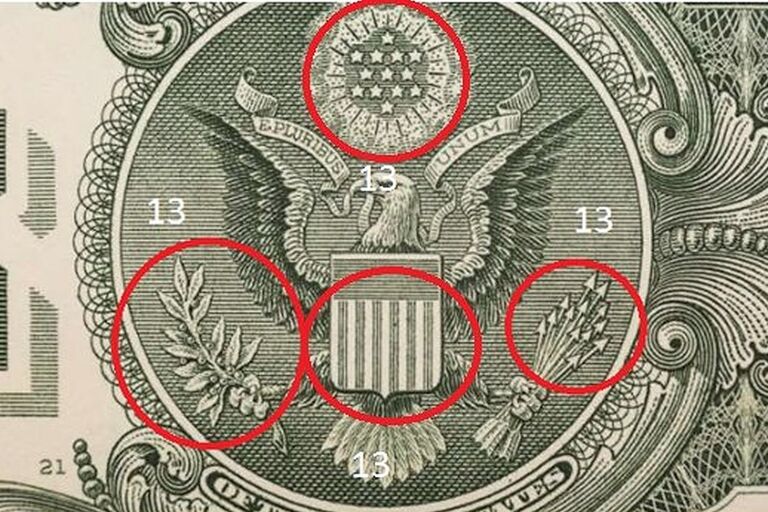
The number 13 is often considered unlucky, but it appears throughout the design of the U.S. dollar bill. In fact, there are many instances of the number 13 on the bill. The number is literally everywhere.
There are 13 olive branches, 13 olive fruits, 13 arrows, 13 stars, 13 bars on the shield, and 13 rungs on the pyramid. It is not clear exactly why the designers of the dollar bill chose to include so many instances of the number 13.
The Biggest Bills Of All

Though it is rare to come across a U.S. bill larger than $100 in circulation today, the Treasury Department did produce bills of higher denominations in the past. These included $500, $1,000, $5,000, and $10,000.
However, these bills were primarily used for bank transfers and were not intended for general circulation. As a result, most of these higher denomination bills have been discontinued and are no longer in circulation. However, they are not the highest denominations that have ever been printed in the U.S.
Yes, $100,000 Bills Existed
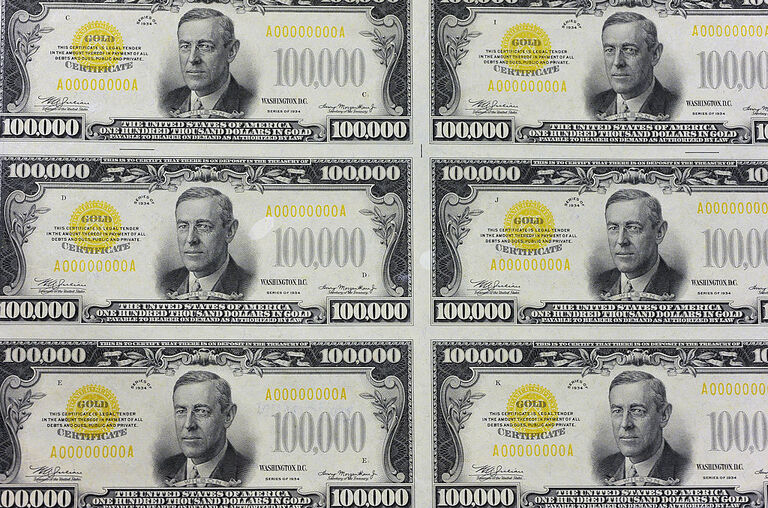
The most valuable piece of currency ever produced by the U.S. Treasury is the $100,000 Series 1934 Gold Certificate, which features the portrait of President Woodrow Wilson. These bills were never released into circulation and were only used within the Federal Reserve banking system from December 18, 1934, to January 9, 1935.
During this time, the $100,000 bill was used for large transactions between banks and was not intended for everyday use by the general public. Alas, such bills are just a pipe dream for commoners like us.
Dirty Georgie?

It is well-known that dollar bills can carry various types of viruses and bacteria due to their constant handling and circulation. The COVID-19 pandemic has brought this issue to wider attention as people have become more aware of the importance of frequently washing their hands and avoiding contact with potentially contaminated surfaces.
Dollar bills can also contain trace amounts of drugs, as demonstrated by a 1996 study published in the Journal of Analytical Toxicology. The study found that 79% of $1 bills tested positive for traces of cocaine.
Keeping Up With The Washingtons
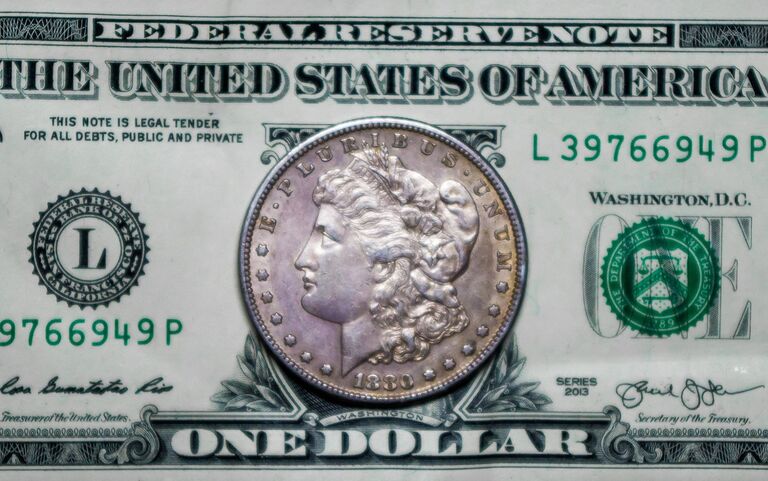
Martha Washington, the first First Lady of the United States, was seen on U.S. currency. From 1886 to 1957, the $1 silver certificate featured Martha Washington’s portrait. Unfortunately, the $1 silver certificate was eventually discontinued.
However, her appearance marked the only occasion a presidential couple was seen on money. Mrs. Washington also holds the rare distinction of being the only First Lady to appear on American currency.
Making A Buck Costs Less Than A Dollar
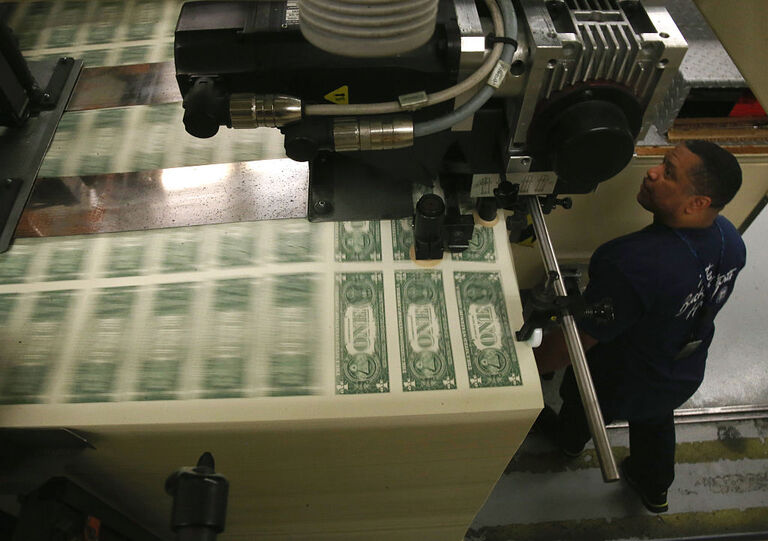
Who knew that producing a one-dollar bill actually costs a lot less than a buck? It may surprise you to learn that the dollar-making process is extremely cost-effective. You might not believe it, but according to the Federal Reserve, it costs approximately 5.5 cents to produce a single dollar bill.
This is a relatively low cost compared to the face value of the bill, which is $1. While it is relatively inexpensive to produce dollar bills, the cost of producing other forms of currency can be higher.
The Higher The Currency, The More Costly It Is

All in all, nothing beats the value of the dollar, both in its purchasing power as well as the cost of producing it. It is interesting to note that the cost of producing different denominations of U.S. currency can vary significantly.
For example, the fifty-dollar bill is the most expensive to produce, with a cost of approximately 19 cents per bill. On the other hand, the penny, which is the lowest denomination of U.S. currency, is the least expensive to produce, with a cost of approximately 2.06 cents per coin.
